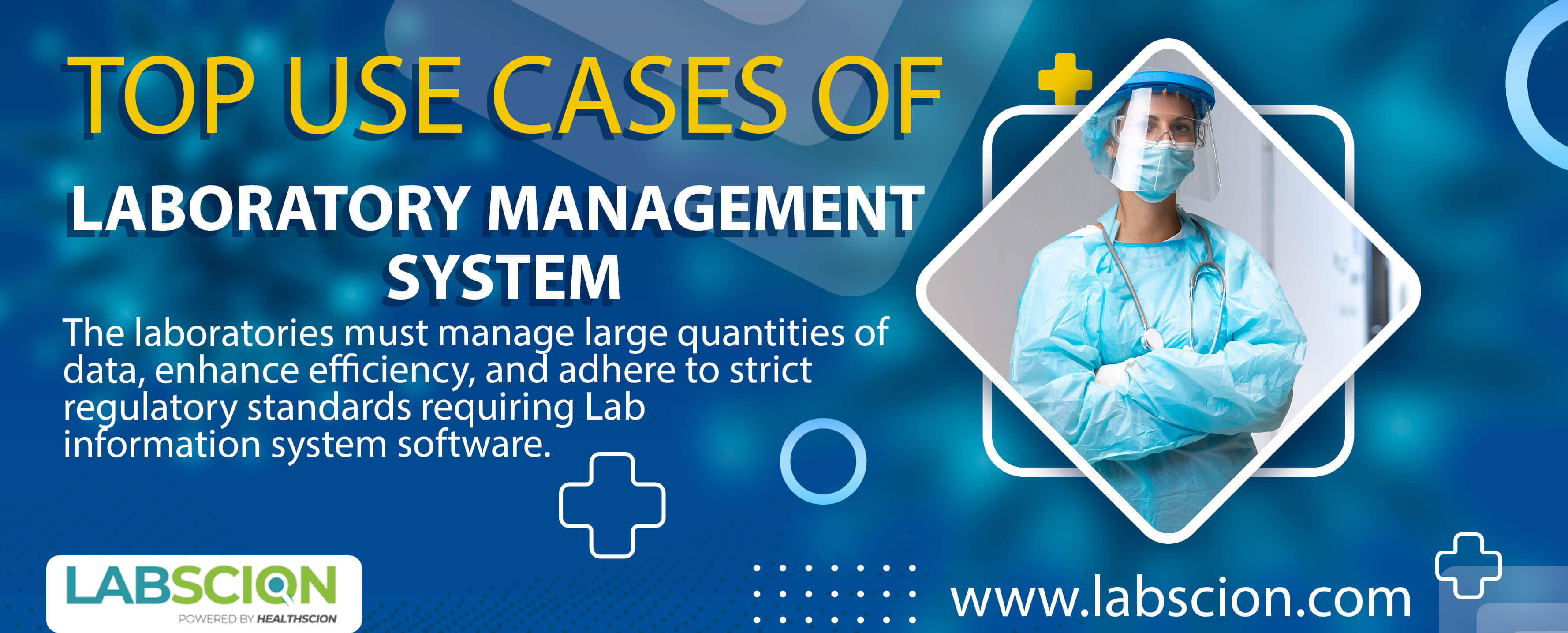
Top Use Cases of Laboratory Management System
A Laboratory Information Management System (LIMS) is a software application centered on a central database that houses metadata, samples, workflows, results, and associated instruments. LIMS implementation in laboratories serves multiple purposes, such as improving organization, enhancing efficiency, ensuring transparency, and meeting regulatory compliance.
Read on to learn about the most popular use cases of LIMS –
Sample Management - LIMS system laboratory software is used for streamlining the documentation, tracking, and inventory management of controls and samples in laboratories. Efficient management eliminates manual processes, reduces errors, and ensures scientists have access to the required materials when needed, improving overall efficiency.
Environmental Monitoring - Implement a reliable environmental monitoring program to ensure clean and germ-free manufacturing environments, equipment, and water supplies in labs. Regularly test the manufacturing environment, conduct checks before and after batch manufacture, and monitor water quality throughout the distribution system. A LIMS facilitates traceability and detects potential contaminants, ensuring product safety and quality.
Stability Study Management - LIMS can be used to set up and manage an inventory of samples for long-term studies, investigating the effects of storage conditions on products. Track sample testing and the execution of specific tests, predict degradation through data trending, and simplify the complex testing matrix involved in stability studies, enhancing accuracy and efficiency.
Internal Reporting - Laboratory Management System can be utilized for creating audit trails documenting sample storage, consumption, and results, as well as data analysis, facilitating internal reporting processes. This automated reporting and centralized data access promote greater accountability among lab members, optimize discussions and decision-making, and enhance compliance with institutional audits and routine maintenance.
Reporting to Clients – The lab management software is designed to document sample data comprehensively and accurately using LIMS. It ensures the highest level of transparency. By adhering to rigorous standards, external reporting becomes a positive experience, fostering trust in the laboratorys outcomes among clients and stakeholders, thereby enhancing reputation and credibility.
Resource Consumption Optimization - By automating data collection, organization, and retrieval processes, Lab information system software minimizes the time lab members spend on administrative tasks, allowing them to focus more on essential work and analysis. Quick and easy access to samples through a LIMS also saves time and costs for searching for or potentially recreating necessary samples.
Conclusion
In the face of growing demands, increased data volumes, and stricter regulations, laboratories can benefit from implementing a LIMS system. A LIMS system enhances efficiency through workload management and automated reporting by introducing control and transparency. It improves compliance with built-in transparency and controls and facilitates faster and more informed decision-making through data utilization and informatics. Selecting the appropriate LIMS system can revolutionize daily laboratory operations, enabling greater productivity and confidence in generated results.

